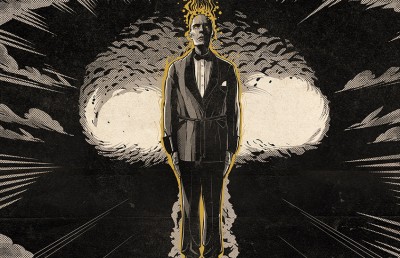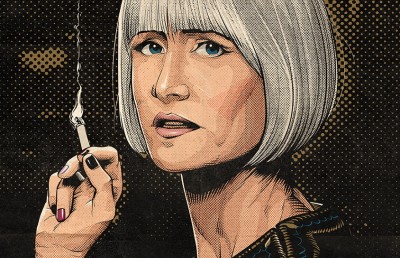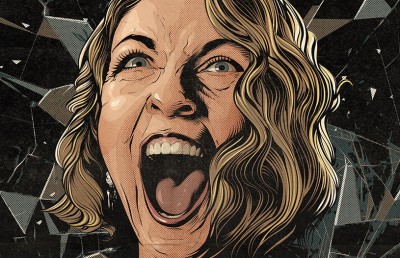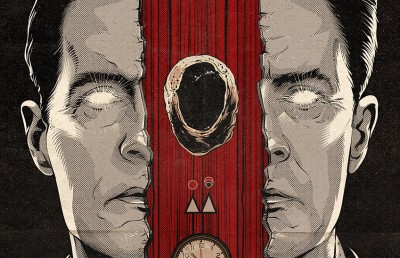You Can’t Go Home Again: A Twin Peaks Story
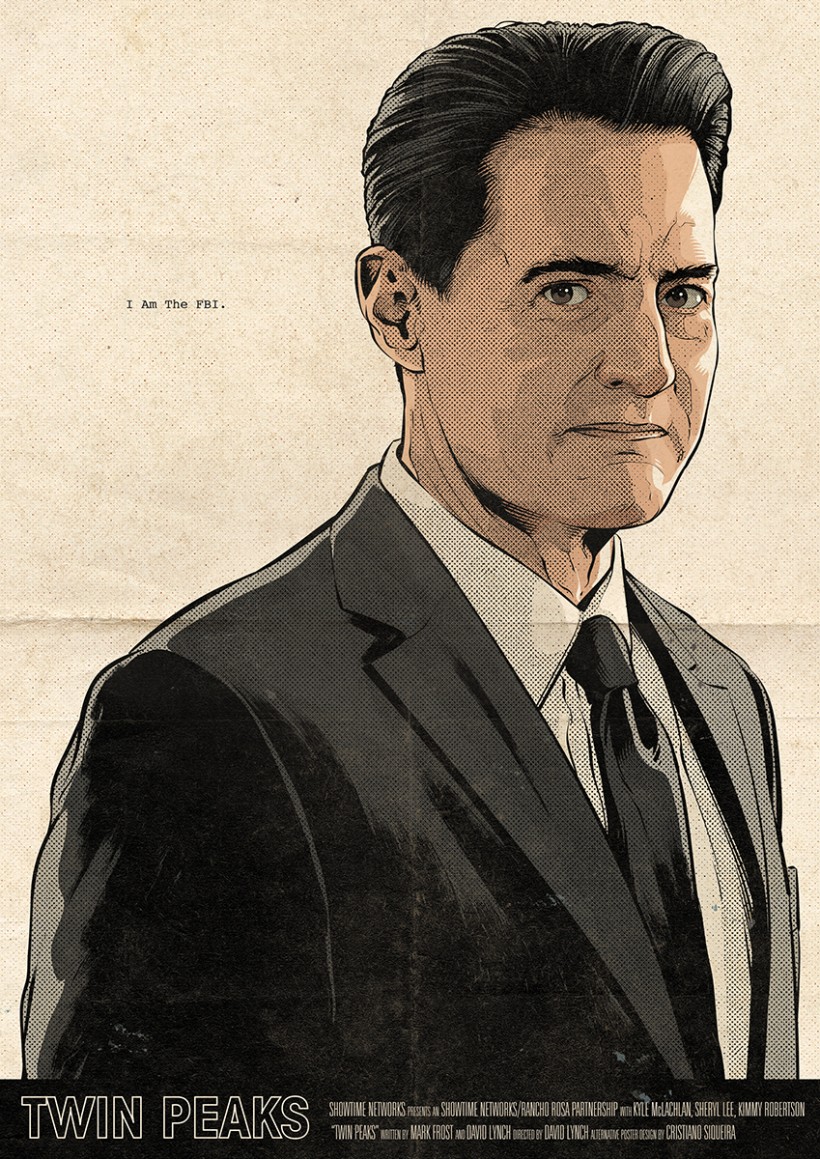
Image courtesy of Cristiano Siqueira
Beginnings
I was sixteen years old the first time I saw a David Lynch film. At that time, in 2006, my parents had a subscription to Showtime, and at night on weekends after my parents had gone to bed, I would sit up in the living room and scroll through the channel guide looking for something new and interesting to watch. My parents’ subscription granted us access to all of Showtime’s different channels. In addition to the main channel, there were specific channels for horror, mystery, romance, and so on; there must have been at least ten of them, each one holding forth the promise of a different array of cinematic experiences. I was beginning to become interested in cinema as an art form pretty seriously at that age. I’m just old enough to be part of a generation for whom pay cable, with its reputation for both prestige cinema and late night softcore, held a titillating allure: the promise, as David Lynch would no doubt appreciate, of seeing something that had been hidden from me to that point. There was the sex and violence of R rated films that were generally not on the docket for family movie nights, of course. But more than that, the promise of a cinema alive to its own artistic possibilities, the creativity and inspiration largely absent from the mainstream “entertainment” I had been raised on and that my parents preferred. I was beginning to cultivate a pretty self-serious “artistic” sensibility at that age (never mind that I had produced no art to speak of), and I yearned to see the deep and limitless generative energy that I felt lay untapped within myself reflected back to me as creative inspiration through the prism of another’s artistic genius.
I was an avid reader as a child. Like so many young children enthralled by the unique magic of literature, I spent many a night underneath my blankets with a book and flashlight, staying awake into the early hours, unable to tear myself away from the many fictional worlds, peopled with fascinating characters with compelling conflicts and emotions, into which I had plunged, oblivious to the humdrum tedium of real existence when confronted with the diamantine spectacle of the imagination. On one particular occasion, I remember my mother scolding me for draping my bedside lamp in a sarape to conceal the light – an obvious fire hazard, she explained. I couldn’t help it – those blankets were getting stuffy. I read everything I could get my hands on. Like with many people my age, the Harry Potter series was an elemental component of my childhood, in addition to The Chronicles of Narnia and, later, Philip Pullman’s His Dark Materials. An early childhood favorite was the lovingly illustrated D’Aulaires’ Book of Greek Myths; I became quite the mythology buff, and I’m sure I bored everyone to tears recounting myth after myth about these fascinating personages, these Gods, who walked the earth and shaped the lives of men millennia ago. I evinced my fair share of precociousness too in my happy gravitation toward classic literature; I remember reading Twain, Dickens, and Conan Doyle in elementary school, probably as sure an indication as any that my life would be intertwined with the study of literature.
I still love to read; I had better, given that I’m staying in school until almost 30 to get a PhD in English. It’s storytelling that I love, really – the creation of other worlds, other universes, that beckon to me like secret passageways in the darkness, their strangeness their allure, the promise of new people and new places, new sights spread before my mind’s eye in a dazzling array of wonder, of beauty, of mystery. The stories with which we engage invite us into these worlds, and the experiences we have there are, in many ways, just as real and impactful as anything that happens between us and others in the real world, often even more so. Such is the value of storytelling, why we engage in the practice in the first place. As human beings, we hunger for experience, for knowledge, for emotion, intimacy, new perspectives, the endless parade of variety that we call life. And though the greatest fulfillment of that desire is to be found, certainly, in our relationships with others and in our interactions with the world, it is through the faculty of our imagination, as reflected in the stories that we tell, that we rehearse those desires, explore and reconcile their meaning, and reckon with the fundamental weight of existence that we all must bear. The actions that we take in the world make up the stuff of our lives, but stories reveal to us life’s significance.
Senses and Sensibilities
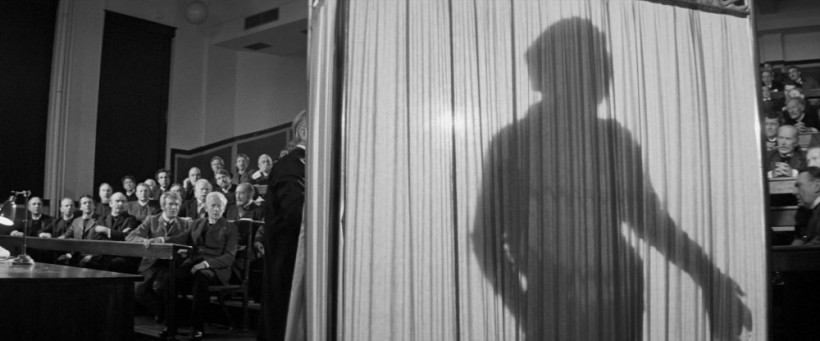
If this seems a rather metaphysical and rambling opening to a putative review of a TV show, it is only to properly frame the central role that David Lynch and his work have played in my life so far. To return to 2006 – as I have already mentioned, I was beginning at that time to fall in love with cinema and to hunger for exposure to a greater, more creative, more interesting type of cinema that I knew was out there, waiting for me to come and watch with wide-eyed receptivity. I had, from an early age, been impressed by the unique powers of narrative storytelling, and my voracious appetite for novels as a child reflected this intuitive understanding. Narrative likewise found expression in cinema, though in a limited form – there’s only so much story that can be told in a two-hour film as compared to a several hundred page long novel. But it was what cinema possessed that novels didn’t that drew me to it specifically – the visual. It’s true that the visual presentation of cinema forecloses the near-limitless free reign that the imagination experiences in entering the world of a novel; the images on the screen tie the world of the film to a particular concrete arrangement of objects in space, harshly limiting the creative malleability that the reader of a novel brings to bear on the novel’s world as it is constructed in his or her mind. In return for that down payment of the imagination, however, the cinema offers something to its viewer that a novel, no matter how descriptive, never could, and that is the full force of the visual as it is sensorially experienced in everyday life. Through its defamiliarization on the screen, the visual takes on new life, speaking to the viewer in a language beyond and before language; light striking the handle of a door, ripples of sunlight on water, the caress of light and shadow on nude flesh – all of these are unique properties of a visual medium, and they, like painting, ask us to look at our world in a different way. The visual speaks just as surely as words do, and it is this combination of the sensory appeal of visual art with the mystery and seduction of narrative that drew me so ineluctably toward cinema as a uniquely powerful and rewarding art form. And though I’ve watched the work of many film artists and been inspired and moved by a range of filmmaking across the many decades of cinema’s existence, no filmmaker, no artist, no author, no teller of stories has ever touched my soul and awakened my imagination like David Lynch. And that night in 2006 when I was first exposed to Lynch’s work, to the dark and dreamlike world of his imagination, marked a turning point in my life – more than my first kiss, my first drink of alcohol, my first time falling in love, it was this immersion into the world born from this one man’s consciousness that marked the divide between my childhood and what lay beyond. It was through Lynch’s work that I took my first steps into intellectual maturity and began to define myself, as my future began to form and reform itself in smoky, swirling, tenuous patterns in the dim illuminating light of my own determination, as a student, a scholar, of narrative literature.
That first film that I watched that night was The Elephant Man; as anyone familiar with Lynch’s work will tell you, that film is hardly representative, at least in an obvious surface way, of his more characteristic artistic preoccupations. Yet even in that relatively mainstream film, I could sense an artistic sensibility shining through unlike any I had ever encountered. The immense humanity of John Merrick’s story, the film’s blatant condemnation of toxic and systemic structures of social oppression, the artful and extremely moving shot compositions that, for a thirty-four year old director making only his second film, were near astounding in the deep and expressive artistic intuition they betrayed. The film’s final sequence, set to Samuel Barber’s Adagio for Strings, in which the camera examines in close up the model cathedral that John Merrick has constructed, remains one of the most profoundly moving and assuredly composed sequences of filmmaking I have ever witnessed, as well as an early indication of Lynch’s near alchemical ability to perfectly marry image and sound together to create a uniquely indicative mood, a talent that would later be on full display in future works such as Blue Velvet and Mulholland Drive. I was mesmerized. Not long after that night, once again searching Showtime for a film to watch, I saw a title that looked interesting and pushed the info button on the remote: “Directed by David Lynch.” Needless to say, I immediately changed the channel, excited to see what new road this magician, this sorcerer of the senses, might lead me down. That film was Wild at Heart, about as different a film from The Elephant Man as could be imagined, but one that nonetheless vibrated and shimmered with the same artistic conviction, the same commitment to creating a world and drawing the viewer inside it. It was in this film that I encountered the more widely known elements of Lynch’s style – the stylized violence, wildly expressionistic filmmaking, the bizarre, the grotesque – and I was utterly enchanted, cognizant that I had never before seen a film that even attempted to reach for the idiosyncratic heights this film achieved. After that, I did my utmost to track down a DVD copy of Blue Velvet, a film that my mother referred to as, and I’m paraphrasing, “perverted trash” – a ringing endorsement in my book – and the rest, as they say, is history.
Arriving in Twin Peaks
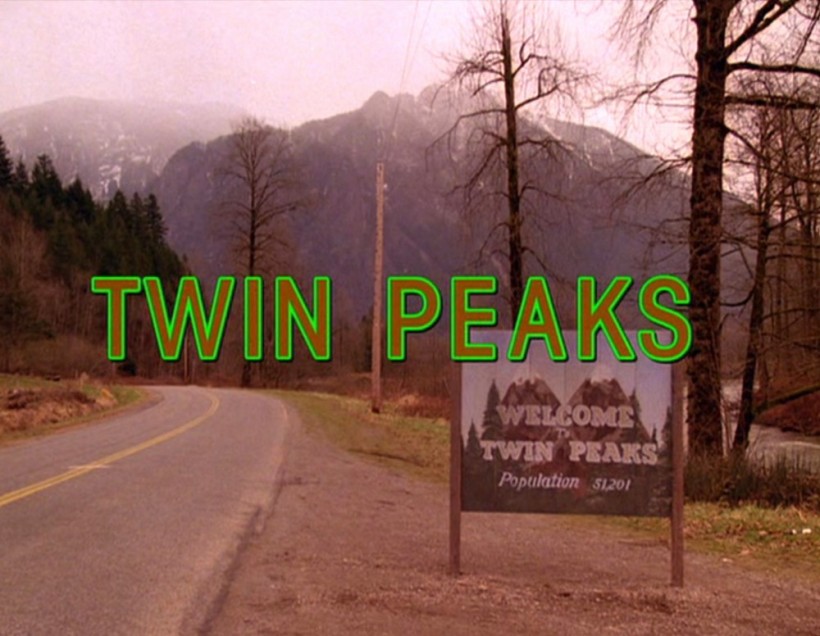
The first time that I watched Twin Peaks was in 2008, the first semester of my freshman year of college. I had already gotten a taste of Lynch’s cinematic brilliance working within feature films, but what would he be able to do with a TV show? All I knew about the show was its reputation – “weird,” quirky, a really big hit back in 1990, that it was immensely influential in the artistic development of TV as a medium. Oh, and that there was a dancing dwarf. 2008 was situated more or less at the beginning of the time that we might now call “Peak TV.” As has been reiterated ad nauseam, Twin Peaks represented a sea change in TV programming; before the show premiered, there had been almost no serious works of ongoing narrative art produced for TV. After Twin Peaks, everything changed; TV had been given permission to be serious art, and many creative and dramatically and cinematically complex programs proliferated throughout the 1990s and 2000s until reaching this point, in the 2010s, when there’s so much quality programming available it’s impossible to watch it all, truly an embarrassment of riches. Even 27 years later, however, when we’re surrounded by the glut of Peak TV and prestige programming, the original run of Twin Peaks still holds up as something truly special, a unique gem that has had many imitators in the decades since but that has proven, in the end, fundamentally inimitable.
When people look back on Twin Peaks, they remember it as a horror show, and most of the work that has paid homage to the show over the years has been situated in the horror genre. Twin Peaks was horrifying, yes, but it was often so much more. The last time I watched the original run of the show through, I was struck by how deftly the show juggled so many different tones and genres – it was horror, but it was also mystery, detective story, small town soap opera, farcical comedy, and teenage romance. It was the dexterity with which the story managed to do justice to all of these different genres, and the seamless fluidity with which they coexisted with one another, within individual episodes and even individual scenes, that marked the show’s greatest artistic triumph and that stymied efforts, in the intervening years, to replicate the show’s success. The ease with which any given episode of Twin Peaks is able to flow from gut busting humor to emotionally moving drama to bone chilling horror and back again is truly breathtaking to behold. It is a remarkable feat of narrative sleight of hand, and I have never seen it replicated in any other TV show.
From the very first, I was under Twin Peaks’ spell. I remember staying up late at night in the dark of my room, earbuds crammed in my ears, binge watching the show on CBS’ website while my roommate slept (this was before streaming and binge watching were really widely practiced, and I felt very sophisticated watching TV on the Internet). I was in love with the town of Twin Peaks, with the bizarre and endearing characters who populated it (the Log Lady!), with FBI Special Agent Dale Cooper, and with Laura Palmer, the sad, beautiful, tortured girl whose serene face served as the absent center of the show’s narrative, a locus of unapproachable trauma around which every other element of the story was oriented. The story was an utterly compelling mystery, a seemingly run of the mill murder investigation that very quickly evolved into something much stranger and more unsettling. And though the supernatural elements of the show’s world that were gradually revealed over the course of its original run were, by their very nature, strange and thrilling, what really made the show special was its willingness to push artistic boundaries, to take risks, and to bring a consistent attention to cinematic style and detail to TV. There are some scenes in the show, particularly in the episodes that Lynch directed himself, that rank among the most strange, innovative, memorable, and thought provoking audiovisual compositions ever put on film – I challenge anyone who has watched the final episode of the second season to forget Cooper’s terrifying, nightmare-inducing odyssey through the Black Lodge, still surely one of the most effective and unsettling horror sequences in the history of cinema.
Through Laura’s Eyes
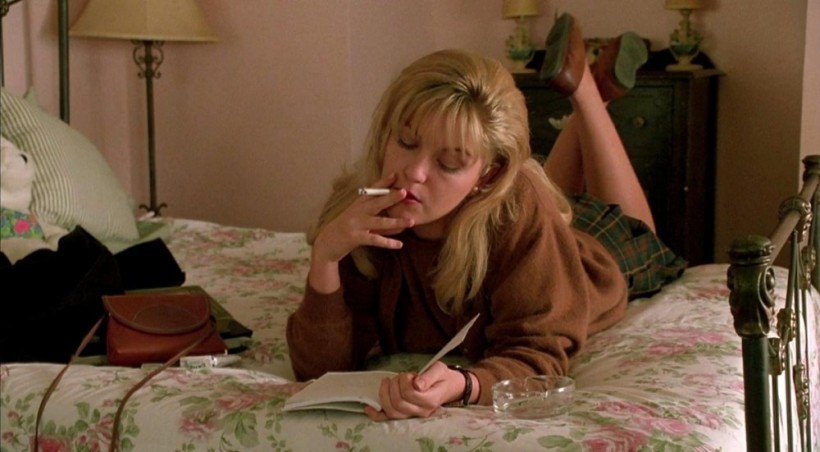
To speak of the show’s more overt horror elements is to explicitly invoke the uncanny. Although Lynch was still relatively early in his career in 1990, he had already established himself, largely through Blue Velvet, as an artist in love with the uncanny, with the strangeness that lives under the skin of everyday life. The most frequently cited innovation of that film was to reveal that darkness within the heart of Americana itself, the moral rot that has always lain beneath the thick layer of metaphorical shellac we call “the American dream.” Twin Peaks took up the themes of Blue Velvet and improved upon them, extending them and bringing them to a more dynamic and nuanced life. Although Twin Peaks was odd and filled with quirky people, it was also certainly intended to be a snapshot of a kind of small American community out of which the myth of Americana is woven. Anyone who had ever spent time in a small American town could recognize the idiosyncratic rhythms and charming eccentricities of life in Twin Peaks; likewise, as Lynch insisted we must, we were also forced to confront the darkness that lay beneath that charming veneer, the ugliness that ran through our society – an ugliness that, in both Blue Velvet and Twin Peaks, particularly took the form of toxic masculinity, systemic cultural misogyny, and sexual abuse. The dark heart of both of these works is the mistreatment of women, and Lynch would not allow us American viewers, thinking ourselves smugly distanced from the world on the screen, to disavow the violence and misogyny that runs throughout our culture. This social critique comes to a head in Twin Peaks: Fire Walk with Me, the criminally underrated prequel film, in which we see Laura live out the tragic final days of her life, a victim not only of the sexual abuse she has suffered for years but also of a society that would allow such abuse to pass unnoticed.
Although Dale Cooper was ostensibly the protagonist of Twin Peaks, and his investigation into Laura’s murder the central narrative device around which the show was structured, it was Laura herself who lay at the center of the show – it was her death that inaugurated the narrative, shaping the experience of all the characters whom we grew to love so dearly and serving as a gateway to the mysteries of the small Washington town haunted not only by demonic entities but also by evil that was all too human, as the haunting image of Laura’s photograph, overlaying the end credits, reminded viewers at the close of each episode. Through Laura, the show coalesced around an absent center, a lacuna of unrepresentable trauma that could only be glimpsed in visions, in flashbacks, and in doppelgangers. There was the distinct sense, when watching the show, that Laura’s dark fate, to which the horrifying particulars of her tortured life seemingly inevitably led, was so fundamentally evil, so powerful in its transgression of all of life’s innocence and beauty, that it would utterly annihilate anyone, through the devouring power of its trauma, who strayed too close to its unapproachable borders. And indeed, this proved to be the case for our intrepid Agent Cooper, seemingly the personification of all that was good and decent within human nature, as he entered into the Black Lodge, the ultimate nexus of evil and trauma within the show’s universe, in the final episode, only to become trapped within its red draped confines, unable to leave this place of death and pain as his evil doppelganger took his place in the real world, the ultimate violation of everything for which Cooper had come to stand over the course of the series, in what was, at least until the advent of the show’s third season, perhaps the most frustrating and heart-shattering series finale in TV history.
It would have been easy for David Lynch to resolve the show’s torturous ending in a subsequent feature film, and perhaps he would have done so in a second Twin Peaks film had the reception to Fire Walk with Me not been so vitriolically negative, but his decision to make that film a prequel, to center Laura within the story in a way that the show, by necessity, had never been able to do, is indicative of the deep humanism that can be read throughout his entire body of work. Twin Peaks was always Laura’s story, the same way that Blue Velvet was Dorothy Vallens’ story, for it was the trauma that both women endured that produced and centered the narrative of both works. In Twin Peaks, Lynch had explored the impact that the reverberations of Laura’s trauma had on the town itself and its inhabitants, but in Fire Walk with Me, Lynch returned to Laura’s story to explore the origins of that trauma and do justice to this character upon whose pain the tremendous success of the show had been built. Lynch must have recognized that he owed a debt to Laura, and Fire Walk with Me was his attempt to represent what had previously been unrepresentable – the horror and trauma of sexual abuse that had destroyed the seemingly innocent homecoming queen, the town’s golden girl upon whom everyone in the community staked a claim and who ultimately was devoured not only directly by the forces of evil but also, importantly, by the moral rot of the town’s complicity in her sexual abuse. Although Lynch has peopled his filmic worlds with many victimized women who suffer at the hands of systemic misogyny, no character has so epitomized both the horror of traumatic suffering and the wounded beauty of defiled innocence as thoroughly, and heartbreakingly, as Laura. Sheryl Lee’s performance in Fire Walk with Me remains one of the most titanic works of film acting I’ve ever witnessed, a sustained implosion of operatic intensity that reveals the most horrifying secret of trauma – that when trauma is intense and ongoing enough, it can utterly annihilate the subjectivity of its sufferer. As Laura herself states in Jennifer Lynch’s official show tie-in book The Secret Diary of Laura Palmer, “The girl who received this diary on her twelfth birthday has been dead for years, and I who took her place have done nothing but make a mockery of the dreams she once had….My life is whatever the other person in the room wants it to be. Therefore, when I am alone, my life is nothing” (167). As Laura herself is achingly, heartbreakingly aware, the pain of sexual abuse that she has suffered since the age of 12 has thoroughly erased her subjectivity; at her core, beneath the drugs and sex she uses to fill the empty void in her heart, she no longer exists.
I have always felt a strange connection to Laura Palmer. I watched Fire Walk with Me during that freshman year of college, as soon as I finished the series, and when I was only one year older than Laura herself. Perhaps it was the particular sense of the dramatic intensity of one’s own life that one fosters as a teenager that drew me to Laura’s travails, but there was something about this girl, her radiant beauty and her deep, annihilating pain, that spoke to me in a way I only partly understood. Now, by saying this I am not claiming to be like Laura in the literal sense – I have never been sexually abused, nor have I ever worked as a prostitute or been addicted to cocaine. Indeed, compared to Laura and her experience, any suffering I may have endured in my relatively prosaic life seemed less than insignificant, a speck of dust compared to the monumental dark vortex of her trauma. Nevertheless, I felt then and still feel a curious kinship with her, and I’m not sure I can ever sufficiently explain why. I think Laura may have been the first fictional character in whom I saw my own darkness, and my own light, reflected, whose torments and whose suffering resonated in harmony with my own far lesser tribulations and who gave me back to myself, as it were, who allowed me to stand outside of myself, to see a boy whose beauty shone with golden radiance, the precious gift of pure existence the extinction of which within Laura herself constructed between us a bridge of heartbreak and recognition. I was in love with Laura Palmer, and as I reached out toward her in my mind, yearning to save her from her inevitable destruction, she reached back toward me with a reflecting force, and in her anguish and her beauty I discerned the contours of my own subjectivity, of my own struggles, of my pain and happiness and desire, of a boy whose inner radiance staked a claim on the beauty and the wonder of life in defiance of the quotidian nature of my personal history. Through Laura, I was more than just another eighteen-year-old following the routinized path of countless other intellectually ambitious American youths; I was the main character in my own story, a figure of distinction, a subject who mattered. And though I am almost a decade older now, while Laura remains frozen in time, forever 17 – or did, at least, until her return in the new season this year – I still find within her every time I watch Fire Walk with Me the same pellucid clarity she bequeathed to me so many years ago, the deep sorrow and tragic beauty that has magnified my experience of every element of life, from blackest pain to brightest joy, and that has remained these many years within my heart as a symbol, and the engine, of our enduring kinship. I owe much to Laura Palmer, and to her creators, and yet her character remains only the most affecting element, for me, of Twin Peaks itself as a work of art that has bewitched and captivated me like no other work of narrative fiction ever has. Ever since I watched the show that first time and entered into its world, I think a piece of me has remained there ever since, dwelling in the town amongst its cast of characters both charming and sinister and lingering, with both fear and trepidatious longing, within the velvet darkness of the woods within which lie the many paths to mysteries both deeper and unseen.
Although that part of my mind remained within the world of the show, I, like every other viewer, had to make my peace with its ending. The fate of Agent Cooper seemed almost too cruel to accept, a grotesque perversion of Lynch’s firmly established cosmology of good and evil. It wasn’t only crushing to see our beloved Special Agent trapped in a hellish limbo for what would presumably be eternity, it was a violation of everything the show stood for, of every message it had attempted to send about the persistence of love and beauty in the face of trauma and evil. If evil was indeed an ineluctable element of our existence then perhaps it could never truly be vanquished, but Cooper’s fate felt cruel in a way that wasn’t necessary to make that point. Of course, this was not the intended ending of the show, as Lynch and the show’s co-creator Mark Frost were hoping for a third season and Cooper’s fate would almost certainly have been revisited in a second Twin Peaks film. But ABC canceled Twin Peaks after the second season finale, and the extremely hostile critical reception of Fire Walk with Me (one of the greatest crimes in the history of film criticism, in my opinion) more or less ensured the impossibility of producing any further Twin Peaks films. The show was, to use David Lynch’s own words from years later, “dead as a doornail,” and the ending of Season Two was the ending we had to live with. It was the most traumatic ending to any work of literature I had ever encountered, and beyond the tragic unfairness of Cooper’s fate, there was the sense that there were so many mysteries still left unexplored, so many avenues down which the story might progress, so many new beautiful and strange sights to see if only the series could be given a second chance. But it had already been 16 years since Fire Walk with Me when I first watched the show, and it seemed like Twin Peaks had firmly staked out its territory within the graveyard of dead and abandoned TV shows of yesteryear. And so would remain forever, it seemed, as David Lynch seemingly showed little interest in returning to filmmaking at all, let alone to Twin Peaks, following the release of his most recent film, 2006’s Inland Empire. I drew what solace I could from the final scene of Fire Walk with Me, itself one of the most serene compositions in Lynch’s filmography – almost an apology, it seemed, for the ending of the show – Laura Palmer sitting in the Red Room, finally at peace in death, crying tears of relief as she smiles, Agent Cooper’s comforting hand on her shoulder, our two heroes finally united in a dimension beyond all comprehension or understanding but together, together in a way that promised peace and resolution for them both, as happy an ending as maybe we had any right to expect from a story that was so thoroughly generated by grief and trauma. At least in this ending Laura, so tormented in life, could find a measure of equanimity, and Cooper, whose greatest motivation had always been to be of service to others, could care for Laura, the victim for whose justice he tirelessly fought, for the rest of eternity. This was the ending I accepted, and as the years passed and David Lynch’s filmic creative output lay fallow (except for Lady Blue Shanghai, that one short film with Marion Cotillard he made for Dior in 2010 – I watched it in an Internet café in Spain while I was walking the Camino de Santiago during the summer), I made my peace with both Twin Peaks and with Lynch’s entire body of work. If I was never to see my artistic hero produce a new significant work within my adult life, then so be it – his catalogue, though frustratingly brief, is far richer in its brevity than the entire life’s work of more prolific directors lacking Lynch’s talent and originality. He had already given me a gift of immeasurable preciousness, and I refused to respond to that gift with ingratitude. And that was how things remained until 2014.
Anticipating the Return
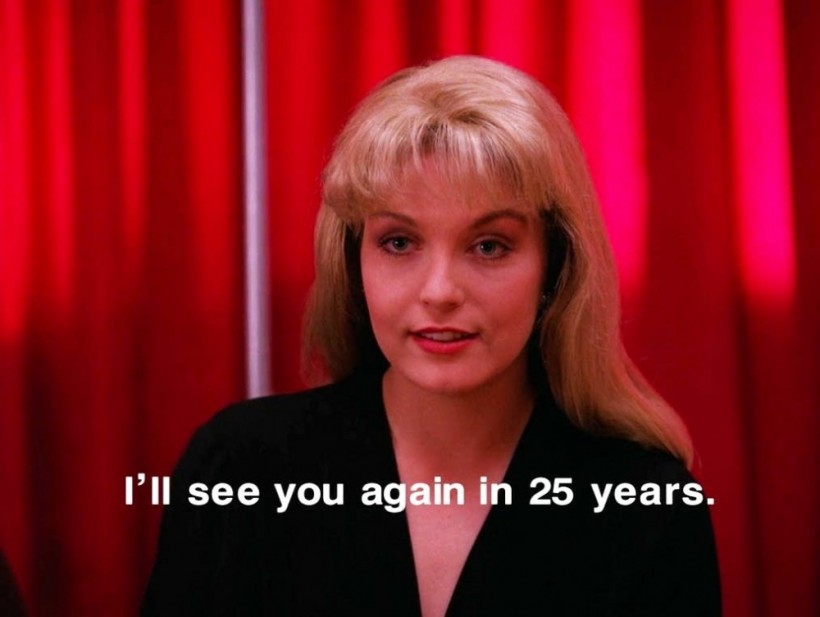
It was October 3 of 2014. I had graduated from Wake Forest University with an MA in English in May of that year, but I had been overly ambitious in applying to PhD programs – in my self-confidence, I had only applied to the best programs in the country and, consequently, was rejected from all of them. I was devastated. It is not an exaggeration to say that my rejection from these programs represented the nadir of my life, in many ways. My entire life had been derailed – my career goal of becoming a university professor of English depended upon earning a PhD, and that of course depended upon being admitted into a PhD program. That 19 (!) programs rejected me made me feel utterly incompetent, unintelligent, and worthless, no matter I knew that competition for these programs is notoriously cutthroat and that there were hundreds of applicants often competing for only three or four slots at any given university. The rejection felt wrong, like it wasn’t supposed to happen – something had gone horribly wrong, and I now faced the prospect of an entire year living at home with my parents while I re-applied more widely during the next application cycle. I had one more chance; if I were shut out again, it would mean the death of my professional aspirations and the terror of facing a future with no dreams, no plans, and no security of any kind. In short, I was at a crossroads, and my entire future lay poised on a precipice between fulfillment and disaster. It was into this environment that on October 3, I and the rest of the world received the news, via Twitter pronouncements by both David Lynch and Mark Frost, that Twin Peaks would be coming back.
I screamed out loud when I read the news (luckily I was alone in the house at that moment). Twin Peaks was coming back, with David Lynch and Mark Frost co-writing and David Lynch directing the entire season, and on Showtime (especially apropos, considering that the network had facilitated my introduction to Lynch’s work), which meant there would be no content restrictions. To say I was elated would be an understatement. I was, frankly, flabbergasted – I was so overloaded with happiness that I felt distinctly numb, like the numbness that follows horrific trauma except in reverse. The story would continue, there would be new and deeper mysteries, David Lynch would finally return to the camera, but more than anything, the cosmic injustice of Dale Cooper’s fate would finally, finally be righted. Of course, there was a wide gulf between the simple announcement of the project and its finally appearing on our television screens. The tribulations and rancorous financial wheedling that dogged pre-production were surely a source of stress for any devoted fan, with David Lynch notably walking away from the production as a negotiating tactic. Even when it became clear that the project would indeed be moving ahead, the wait was agonizing; delayed from its original premiere date in 2016, the new series did not debut until May 21, 2017, two and a half years after being announced.
For two and half years, then, a continuation of Twin Peaks was more than just a fantasy, more than an unhoped-for miracle. During this gap, the bare fact of the show’s continuation encouraged my imagination to drive the story forward into uncharted hypothetical landscapes; when the show finally did return, what form would it take? And how would it relate to the series’ original run? Only one thing could truly be certain – whatever the plot of the revival, it would have to resolve Cooper’s cliffhanger and the whereabouts of his doppelganger. Other than that, however, little could even be speculated, let alone known. I knew that this Twin Peaks would be vastly different, however, from what it was originally. Although David Lynch and Mark Frost shaped the overall structure of the original story, a stable of TV writers worked on the show and produced scripts for the majority of the individual episodes, and likewise a revolving cast of directors were responsible for filming those episodes. Like most TV shows, Twin Peaks was a group production, albeit one unusually molded by Lynch and Frost’s auteurist sensibility. The new season, however, was written in totum before filming even began, a single unbroken script from beginning to end, and Lynch shot the entire season as an 18 hour movie. This would be the purest, most unadulterated experience of Twin Peaks as conceived of by its two creators, and the entire story would be the unblemished fruit of their imaginations. Given that David Lynch is no longer the same artist and filmmaker he was in 1990, I knew that fans who were expecting an unbroken return to small town quirk and 90s nostalgia were going to be sorely disappointed. This new season would almost certainly be darker, stranger, and more arcane than the original, and I imagined that time had most likely not been kind to Twin Peaks; whereas the town in 1989 was a mixture of genuine homespun American kindness with the dark and troubling secrets that lay within, I found it hard to imagine that the Twin Peaks of today, one that had lived through 9/11, the Iraq War, and the Great Recession – and one in which the show’s ultimate symbol of human goodness had ended up possessed by the show’s most nefarious and destructive demonic entity – could possibly retain that loving spirit that had so entranced Agent Cooper upon his arrival. This new season, I expected, would reflect the growing darkness and confusion of post-millennial American life, and I knew that more than anything, dark horrors lay in wait within the Black Lodge.
American Dreams
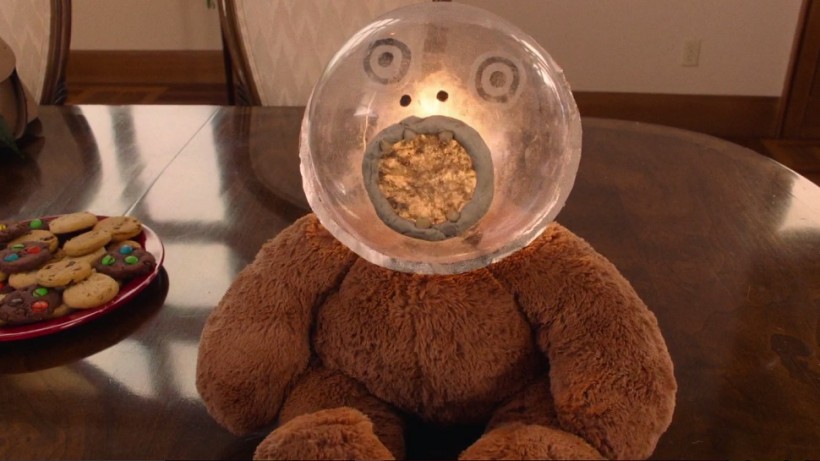
Looking back on the third season now, I wasn’t wrong. The new season was indeed far darker, stranger, and more violent than the show had ever been during its original run. The supernatural elements of the show were on full display and more intriguing and mysterious than ever as each new episode seemingly expanded on the show’s established supernatural mythology. In the town of Twin Peaks itself, where before evil and trauma had lurked under the surface, they now openly broke through that surface – the new kids of Twin Peaks are all hooked on drugs, and like twin pillars of darkness, Sarah Palmer, the ruined victim of trauma, and the truly repulsive Richard Horne, a perpetrator of trauma, orient the majority of the action that takes place in the town during the new season. Pain and trauma remain at the heart of the town, and though the forces of good – wonderfully personified this season by Deputy Hawk and Robert Forster’s new Sherriff Truman – maintain their struggle against “the evil in these woods,” that evil seems even more entrenched than ever, a moral rot spreading through the town and erupting in the most mundane of places – the scene in which the young boy shoots through the window of the Double R, always the town’s chief locus of goodness and light, illustrates just how vulnerable that goodness is in a world overrun by darkness.
Ever the consummate chronicler of the American story, David Lynch uses this new season of Twin Peaks, as I had always suspected he would, to reflect on the increasingly troubled state of our country. If the original Twin Peaks seemingly offered a commentary on the corruption of the small-town innocence of the 1950s of Lynch’s childhood, this new iteration seems to only extend that theme, emphasizing how much worse everything seems now than it did even in 1989. This is a world diseased, and its rotting, putrid core is crystallized within Cooper’s doppelganger, inhabited by the demon BOB, free from the Black Lodge and spreading his evil for the past 25 years. Again, violence against women remains, for Lynch, the chief manifestation of that evil, as we learn that the doppelganger has violated multiple female characters and, through rape, fathered the nefarious Richard Horne, the most awful figure of the new generation of misogynistic scumbags wreaking havoc in Twin Peaks. The political and social commentary in this season seems even more overt than in the original run; the Las Vegas set portion of the story functions as a witty commentary on conspicuous consumerism and the rapaciousness of American greed, and I challenge you to find a more baldly political moment in Lynch’s filmography than Naomi Watts’ delightful monologue on behalf of the proletariat (“We drive cheap, terrible cars!”). Although Lynch and Frost wrote the script for this new season well before the 2016 election, it can hardly be overlooked how strongly the season’s social commentary resonates within the landscape of Trump’s America in 2017. The brutal exposé of entrenched and systemic cultural misogyny, the critique of greed and materialism, and above all the condemnation of human violence as crystallized in the season’s magnificent eighth episode all read as a response to the violent cultural shifts in this country inaugurated by Trump’s invigoration of misogyny, racism, xenophobia, reactionary politics, cultural tribalism, and simple crudeness. As an elegiac response to the loss of a mythic American past, the new season of Twin Peaks functions as the first truly major post-Trump work of American popular art; that the season was written before candidate Trump was even running for President only emphasizes how these social ills were always endemic to American society, a cancerous and malignant blight on the goodness of the human soul and the American spirit.
Elegies for the Lost

Elegy defines the major tonality of this new season, as it constantly emphasizes the mournful loss of innocence and goodness past. This new world is harsher and more violent, and any manifestation of human goodness or kindness appears as an isolated fragment under attack from the crushing darkness of the society surrounding it. To this end, the aged faces of the show’s cast members mightily convey the passage of time and the death of a former dream of bucolic small-town bliss. Such a dream, the series suggests, belongs firmly to the past if it ever existed at all; looking at the weathered lines of Deputy Hawk’s face and his silver hair, the ruin that has become of Sarah Palmer, and above all the Log Lady, her body on the verge of deterioration and hooked up to an oxygen tube, one cannot help but mourn the passage of time that can wreak such horrors upon both the human body and spirit. Nowhere does this concept manifest more clearly in the new season than in the Log Lady’s death – formerly the walking embodiment of all that was charming about Twin Peaks (and Twin Peaks), the Log Lady leaves behind a world in dire need of her prophecy and protection, gifts that, unfortunately, she is no longer able to bestow. That Catherine Coulson died in real life only four days after filming her final scene only highlights the finality and devastation of this moment – she joins Miguel Ferrer, Harry Dean Stanton, and Brent Briscoe as cast members who have died since the season was produced, alongside other actors, including Jack Nance, Frank Silva, and Don Davis, who died during the extended hiatus between the second and third seasons, and the shadow of the actors’ real-world death hangs over the series as a grim reminder of the ineluctability of time and the spiritual impoverishment of the show’s world.
This narrative focus on loss and the passage of time is clearly reflective of the extent to which the new season is the work of a mature artist looking back at his legacy and his life’s work from the end point of his career (although I hope Lynch will keep on making movies for another 20 years, God willing). It is no exaggeration to state that the new season of Twin Peaks is Lynch’s magnum opus, a distillation of all of his artistic, cultural, political, and personal obsessions into one glorious 18-hour whole. Lynch has always been preoccupied with the struggle of good against evil; all of his films, even The Elephant Man and The Straight Story, exist within worlds haunted by the violence and terror wrought by man, and his characters are only sometimes successful at navigating this treacherous and heartbreakingly bleak landscape (poor Diane Selwyn remains his most tragic sacrifice to the darkness of that world). This new season of Twin Peaks magnifies this dualistic opposition between man’s inherent goodness and evil to cosmic proportions, staging it as a fundamental struggle between light and dark on a mythic scale, and in so doing rewriting the entire framework within which the story of Twin Peaks – and the story of Laura Palmer – had always existed. It is at once the grandest and most intimate expression of this eternal struggle against darkness that Lynch has ever envisioned, and it perhaps allows us to make some sense of the season’s ending.
Endings
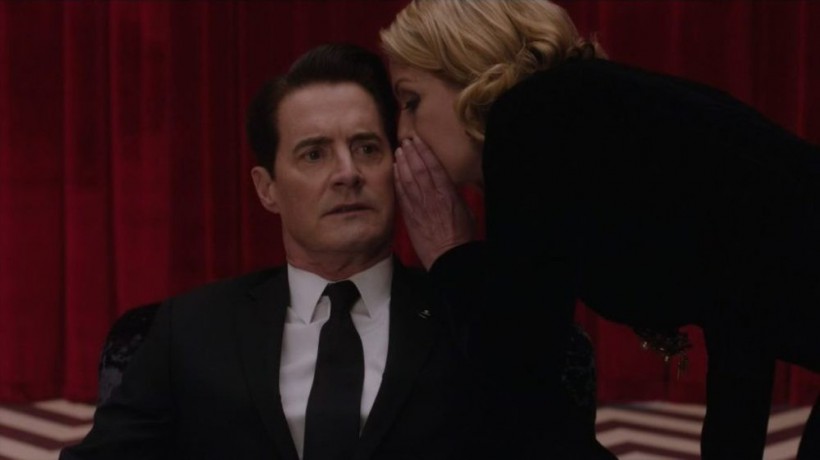
Like every other fan, I watched this season with no idea how the story would unfold, open to any direction that Lynch and Frost wanted to steer the narrative. What I was not expecting, however, was another cliffhanger ending. Season two ended with a cliffhanger because it wasn’t supposed to end at all, but Lynch and Frost had written the entirety of the third season from beginning to end – the end of Part 18 was the ending they had intended for this revival season. Of course, if the show does return for a fourth season, this ending will no longer be the ending to Twin Peaks, but as of now, it’s the ending we’re left with. Like many fans, I was astounded when I watched the final episode. What happened to Cooper? What happened to Laura?? What happened to Judy??? What could this baffling ending possibly mean????
I can’t pretend to have any definitive answers, but I think the ending functions on two registers – the literal facts of what happens and their thematic valence. My personal interpretation of events: Cooper travels back in time in Part 17 for two reasons: to rescue Laura from her fate and to use her as a weapon to combat/destroy Judy, thereby “killing two birds with one stone” (as the Fireman suggested to him at the very beginning of Part 1). If all had been successful, Cooper would have led Laura to the portal to the White Lodge in 1989 and delivered her to the Fireman who would have used her as a weapon against Judy. However, Judy, inhabiting Sarah Palmer in 2014, becomes aware of what’s happening in the past and uses some Black Lodge magic to whisk Laura away into an alternate dimension; we see Laura ripped out of reality in both 1989 and within the Black Lodge. As a result of Cooper and Judy’s actions, a new timeline is established in which Laura disappeared instead of died; it is unclear whether this is the world into which Cooper emerges when he meets Diane in the final episode or whether they are still within the original timeline. At any rate, the Fireman sends Cooper and Diane to the alternate dimension (“Remember Richard and Linda”) where their identities will be reshaped as Richard and Linda; Cooper maintains his memory, however, though his personality does seem to subtly change in this other world. Cooper’s task is to seek out Laura in this world, which he does, finding her living as Carrie Page. He takes her back to Twin Peaks because he is aware that Judy is inhabiting Sarah Palmer, and he wants to use Laura as a weapon to destroy Judy, as had been the original plan. When they arrive in this universe’s Twin Peaks, however, Sarah is nowhere to be found; that the woman who answers the door gives her name as Tremond and mentions the name Chalfont, however, clearly indicates that she is a Black Lodge entity that has been planted here by Judy.
And then, the ending. Laura hears her mother’s voice calling her name and screams, then the lights in the house blow out and everything goes dark. What has happened here? Has Laura destroyed Judy? Has she failed? Are Cooper and Laura even still alive? Is there even any point in asking? I can only trust what I know from my experience as a student of Lynch’s filmography, which is that in Lynch’s work, bad events seem bad, and good events seem good (think of the rapturous final sequences of Wild at Heart and Inland Empire juxtaposed with the mournful self-destruction of the ending of Mulholland Drive). This final sequence, with Laura’s chilling scream and its maddening indeterminacy, doesn’t seem positive at all. I can only think that Cooper has failed in his plan to use Laura as a weapon against Judy, although it does seem that perhaps this is merely one iteration in an endless cycle of Cooper trying, and failing, to vanquish the evil of the world. This makes more sense, however, when we consider the thematic value of the ending in the context of Lynch’s larger thematic preoccupations.
As I have already pointed out, the struggle between good and evil in Lynch’s filmic worlds is an ongoing process; evil will always exist within the world, and the forces of good will always do their utmost to oppose it, sometimes succumbing to pain and despair, other times successful enough to achieve a measure of love and happiness within a disordered and chaotic world. Given this, I don’t think it feasible that Judy, the ultimate symbol of evil within this world, could ever even actually be destroyed, no more than the Fireman could be destroyed. Evil is a part of life, as is goodness, and while we can and must struggle against it as best we can, we can never truly hope to eradicate all evil from the world. To do so is a quixotic fool’s errand, and this indeed seems to be the statement that Lynch is making through Cooper’s ultimate failure here. Likewise, he fails to truly “rescue” Laura from her dark fate. Though she is no longer murdered on that night in 1989, she certainly seems to have lived a decidedly troubled life as Carrie Page (a fact attested to by the dead body in her living room); though she is still alive now, in this new dimension, her life has still been marked by trauma and despair. And though she had forgotten her previous existence as Laura Palmer, her scream in the final scene clearly indicates that, by returning to the originary site of her trauma, the full force of this trauma has come rushing back. In seeking to save Laura, Cooper has merely re-traumatized her all over again.
Once again, Twin Peaks insists upon being, before anything else, a story of the trauma of sexual abuse. Such trauma is so vile and so powerful, Lynch suggests, that it cannot be erased, no matter how valiant the efforts of the beneficent white knights of the world. Though Laura can be saved from death, she can never be saved from the predations and degradations that she suffered as a child, just as Judy, as the embodiment of evil, can never be eradicated. It is Cooper’s failure to realize these twin facts that dooms his enterprise to failure before it has even begun, and the haunting ending leaves us with a deeply chilling message: You can’t go home again. In a season literally subtitled The Return, the act of returning, or the inability to do so, seemed to be consistently the main thematic focus: we the audience were returning to the show after over a quarter century hiatus, but we were decidedly not returning to the same world we left behind. Over and over again, the show emphasized that loss is inevitable, that you cannot return to the innocence that you left behind in the past; all that’s left to do is to reconcile yourself with the new world you’ve inherited and to continue to fight, to do your best to find happiness within the darkness and chaos that will always be a defining element of existence. No matter how much you may wish to change the past, to undo the wrongs and the trauma that have produced so much suffering in the world, to try to do so is a fool’s errand. In the end, such an endeavor will only produce more pain.
This is a bleak ending, no doubt, and it leaves the fate of our two main characters completely unresolved (to say nothing of what happens to Audrey – I don’t even have any idea with that one). It does provide a definitive demonstration, however, of the series’ thematic concerns, and in this way feels more organically like an ending than did the Season Two finale, which simply ended things in medias res. Of course I would like for the story to continue; it would break my heart for Cooper and Laura to be stuck in an endless cycle of pain and futility, as they both deserve a far happier fate than that, a fate that I thought they had indeed received with the ending of Fire Walk with Me. If this is indeed to be the last we ever see of Twin Peaks, though, it is a devastating and uncompromising final punctuation at the end of David Lynch’s masterpiece, the final summation of his entire artistic career and undoubtedly the greatest, in all senses of the word, work of art ever produced for television.
When I went home from college for the first time in November of 2008 for Thanksgiving Break, I could tell that something had changed. The financial crisis had fully manifested in all of its horrible splendor, and although we had just elected Barack Obama, who had campaigned on a platform of radical change and whose victory held forth the promise of eventual relief from the financial woes plaguing the country, it was clear that any such relief would take years to fully manifest. I remember driving down the street to my house in my small hometown city – about the same size as Twin Peaks – and thinking that the air itself looked different. There was a pervasive aura of despair suffused throughout the entire atmosphere, and it adhered to every surface like a sticky, gelatinous film; the feeling was palpable, and disturbing. My area of the country, northwest Georgia, was among the most severely impacted in the Great Recession, and a lot of people ended up out of work and suffering. I had only been away for a few months, and yet this world I was coming back into wasn’t the same one I had left. It struck me at the time that this transformation should happen during my freshman year of college, after I left home to go to school. I left one world, the world of my childhood, and when I came back home, that world had vanished, or at least the town I remembered had irrevocably changed. Almost a decade later, the financial crisis has finally more or less resolved itself, but it still left its mark, its psychic imprint on the fabric of our society, and it does seem like it drew a dividing line, much the same as 9/11 did – there was a before and an after, and there’s no going back to the way things were before.
This was what I thought about when I finished watching the new season of Twin Peaks, this fundamental impossibility of returning. Life is like that too, as F. Scott Fitzgerald so eloquently captured in the final page of The Great Gatsby with the memorable image of boats beating ceaselessly against the current, unable to return to their point of origin but futilely striving nonetheless, just like the tragic and doomed Jay Gatsby. Cooper is like Gatsby, I believe, and the ending of Twin Peaks delivers that same message in an even more dire and heartbreaking form. Driven by his innate and fundamental goodness, Cooper will never cease in his struggle against evil and in his quest to rescue Laura, that ultimate figure of devouring trauma and drowned innocence, from her destructive fate. But, as David Lynch well knows, Cooper will no more be successful in his endeavor (barring a fourth season) than Fred Madison or Diane Selwyn, his other tragic protagonists who seek so desperately to return to a world that no longer exists, or perhaps never did. You can’t go home again. All you can do is move forward.



